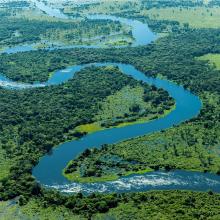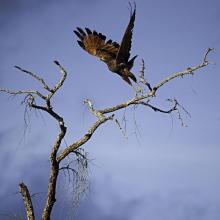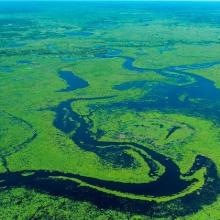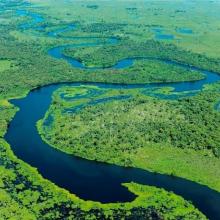






Private Reserve of Natural Heritage Sesc Pantanal (Reserva Particular do Patrimonio Natural SESC Pantanal)
- Country:Brazil
- Site number:1270
- Area:87,871.4 ha
- Designation date:06-12-2002
- Coordinates:16°40'S 56°15'W
Materials presented on this website, particularly maps and territorial information, are as-is and as-available based on available data and do not imply the expression of any opinion whatsoever on the part of the Secretariat of the Ramsar Convention concerning the legal status of any country, territory, city or area, or of its authorities, or concerning the delimitation of its frontiers or boundaries.
Overview
SESC Pantanal, located in Mato Grosso State in the midwestern region of Brazil, is a significant representative of the large Pantanal wetlands. The Site includes permanent rivers, seasonal streams, permanent and seasonal floodplains, freshwater lakes and seasonally flooded forests. Since its establishment, the Reserve has been the largest privately-owned conservation unit in Brazil. The Site provides habitat for at least 30 amphibian species, 53 reptiles and 83 mammals, including vulnerable species such as the Brazilian tapir (Tapirus terrestris), the white-lipped peccary (Tayassu pecari), the giant anteater (Myrmecophaga tridactyla), the marsh deer (Blastocerus dichotomus) and the critically endangered Eskimo curlew (Numenius borealis). It is also an ideal nesting site for a large population of birds, including up to 20,000 individuals of the neotropic cormorant (Phalacrocorax brasilianus brasilianus). Since its designation as a Wetland of International Importance, conservation programmes have led to key results including an increase in the local populations of vulnerable species, particularly the hyacinth macaw (Anodorhynchus hyacinthinus). Among the threats that affect the conservation of the Site are illegal fishing, hunting and forest fires.
Administrative region:
Mato Grosso
- Global international designation:
- UNESCO Biosphere Reserve
- National legal designation:
- Private Natural Heritage Reserve(RPPN)
- Last publication date:21-02-2020
